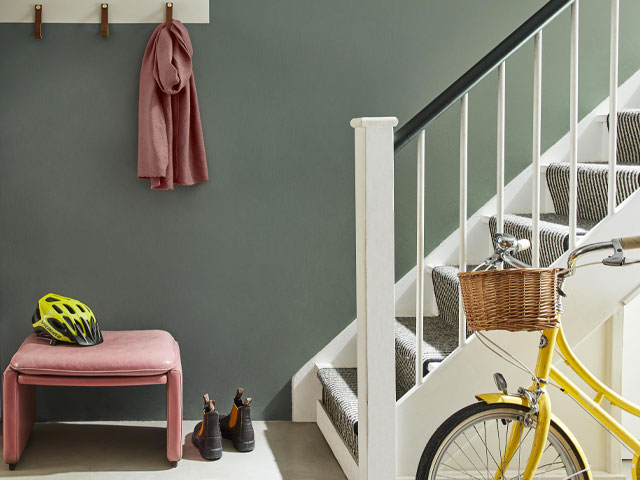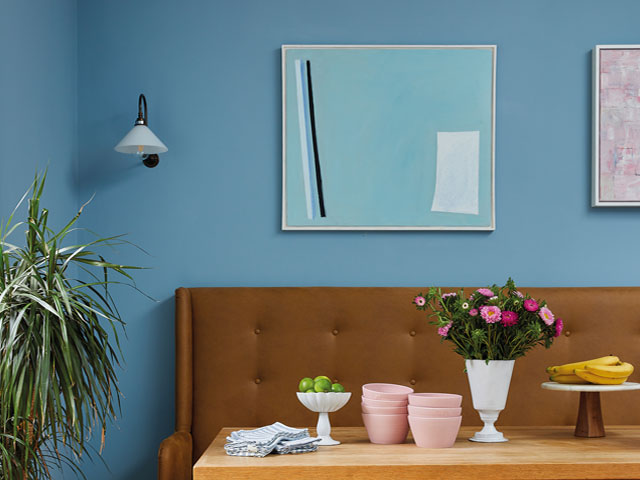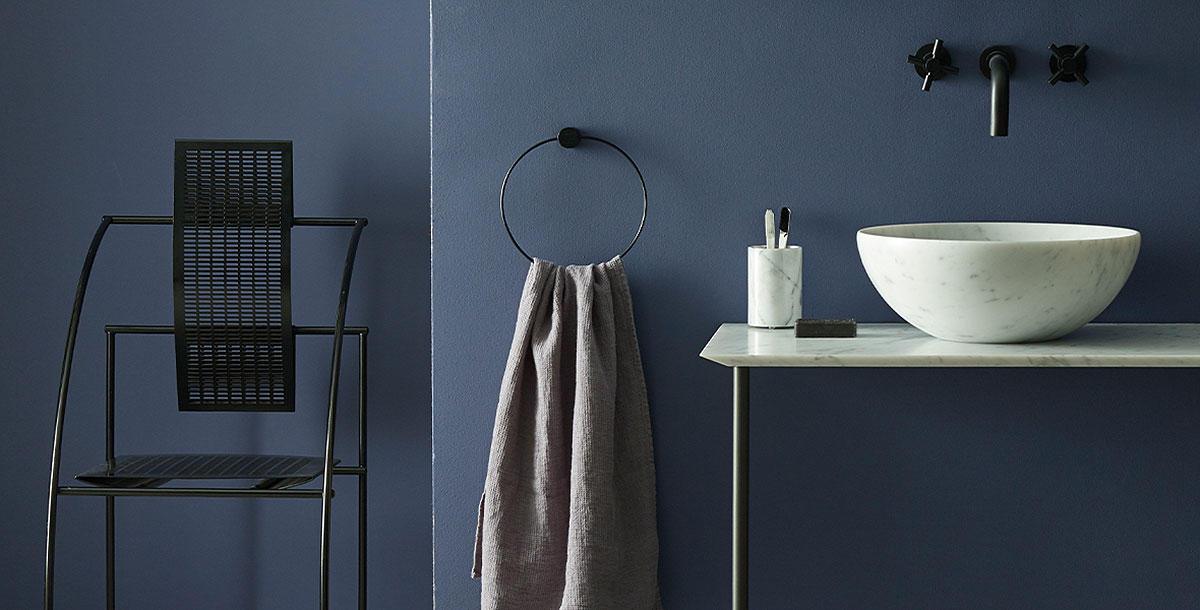Eco-friendly paint: a buyer’s guide
How to get great colour and coverage for your home while safeguarding the environment
Finding the perfect colour is a priority, but choosing an eco-friendly paint also makes good sense. Several brands now offer collections that are kind to the environment and have also improved their green manufacturing credentials. These companies offer plastic-free formulas that have non-polluting, low-carbon production and recycling processes.
What is eco-friendly paint?
Natural, organic, green and eco-friendly are all terms used by paint companies to describe their formulas, so understanding what makes one brand greener than another can be tricky.
Some paints are made with a high proportion, or entirely, of natural ingredients such as chalk, clay, plant oils and plant dyes used for colouring, and there are vegan ranges too. There are no plastics or microplastics in natural paint, and it doesn’t contain or release chemical toxins. Ingredients are renewable, meaning the paint is carbon neutral.
Water-based paints tend to be more eco-friendly than oil-based ones, not just because of their ingredients, but also because the brushes and rollers used to apply them don’t need to be cleaned with white spirit.
Manufacturers and retailers such as Auro, Earthborn, Edward Bulmer Natural Paint and Lakeland Paints are transparent about the ingredients used – look for a listing on the company’s website.

Photo: Little Greene
Why choose eco-friendly paint?
The chemicals and plastics used to make some paint formulas are detrimental to our health and the world around us. A 2021 report by research consultancy Environmental Action, called Plastic Paints the Environment, indicates that the contribution of paint to both the macro and microplastic leaking into the environment is significant. The mean value is 7.4 metric tonnes per year (Mt/year).
Of the six main areas of paint use analysed – architectural, automotive, general industry, industrial wood, marine, road markings – the architectural sector is the greatest contributor at 48%. Of this, 26% is household dust that includes interior paint lost due to wear and tear or being removed. Soil contamination comes from exterior paint that weathers or has been removed.
‘Try to avoid paint that includes plastic as a binder mixed with additives and fillers, which form a plastic-like film on a surface,’ says Simon Corbey, director of The Alliance for Sustainable Building Products (ASBP), which has a list of plastic-free paint manufacturers on its website. ‘They are not breathable and are particularly unsuitable for older buildings, which tend to have movement of moisture through the wall.’
Eco-friendly paints can also offer unique finishes that standard paints don’t: ‘The colours of paints such as limewash change with the daylight and respond to light, creating a unique depth,’ says Francesca Wezel, founder and director of Francesca’s Paints.
Some eco-friendly paints can even reduce – not just negate – their environmental impact: ‘Manufacturer Graphenstone combines graphene, which is a form of carbon, with lime and other natural minerals in its paint,’ says Phil Robinson, founder of Paint the Town Green. ‘As the paint dries, the lime naturally absorbs carbon dioxide (CO2) from the surrounding air.’

Photo: Edward Bulmer Natural Paint
VOC-free paint
Volatile organic compounds (VOCs) are gases that release into the air from solvent-based paints and, in smaller amounts, from water-based formulas. No paint is entirely free from VOCs, but some brands strive to achieve the lowest possible levels.
Low-VOC paint is virtually odourless, tends to dry quickly and provides good coverage. However, this doesn’t mean that all low-VOC formulas are environmentally-friendly, as some contain vinyl and chemical pigments. Ask your retailer or do your own research into how the paint you’re considering is made.
Look for the VOC labelling system – a globe symbol that you’ll find printed on the paint tin. It shows the level of VOCs that are emitted in one of five categories – minimal, low, medium, high and very high. The European Ecolabel flower accreditation is another reliable indicator of low-level VOCs.
If you need to remove an old paint finish before applying a fresh coat, choose a minimal-VOC, water-based stripper such as Eco Solutions’ Home Strip Paint Remover. It requires more work than standard chemical strippers but is less polluting.

Photo: Graphenstone
Low-carbon manufacturing
It’s not just about the eco-friendly paint itself, some brands are making leaps in low-carbon or carbon-positive manufacturing, too.
‘Look at how the ingredients were sourced, the manufacturing process and the environmental credentials of the factory,’ says Phil Robinson of Paint the Town Green. ‘Is it powered by renewable energy? Brands such as Coat Paints are carbon-positive – meaning it removes more carbon than it emits in the process of creating and supplying paint to its customers – and manufactured in the UK.’
Coat Paints recently became the UK’s first and only B Corp-certified paint company following a rigorous assessment of the company’s social and environmental impact. Eco-friendly practices include zero-waste production as paint is mixed to order, a 360-tin recycling scheme, as well as solvent-free recyclable peel-and-stick testers that are 95% less wasteful than traditional tester pots.
Little Greene, which produces natural, minimal VOC-paint in the UK, has made great leaps in low-carbon manufacturing. The family-run company recently launched Re:mix, a collection of left-over paints reformulated into new colours for interior walls and ceilings. Recycling these waste paints prevents as much as 60,000 litres of raw materials from going to waste each year.

Photo: Earthborn
Eco-friendly paint brands
To get an idea of how a selection of different brands measure up, Ethical Consumer has a list of 20 paint manufacturers scored and ranked based on their ethical and environmental record. The list is updated live based on their research database, so check it just before you buy.
Find a list of paint brands with paints labelled as eco-friendly or low-VOC below:
- Earthborn
- Auro
- Lakeland
- Graphenstone
- eicó
- Painthouse
- Little Greene
- Farrow & Ball
- Dowsing and Reynolds
- LIVOS
- Coat









